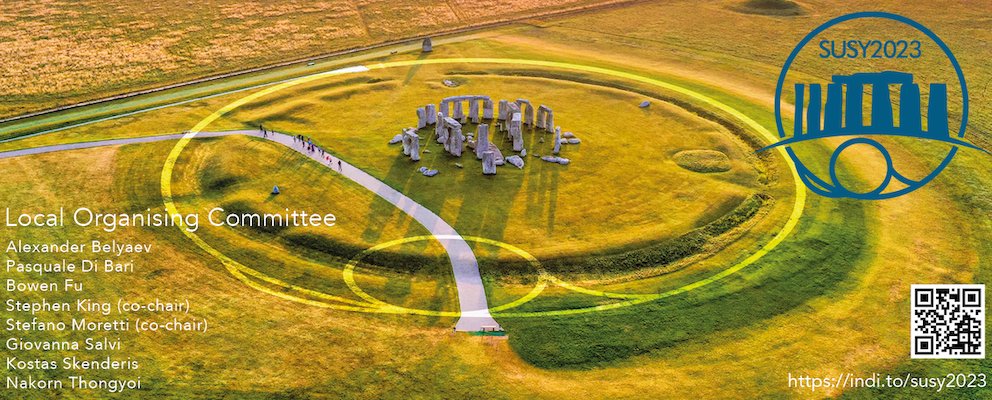Speaker
Description
The lack of information before Big Bang Neucleosynthesis (BBN) allow us to assume the presence of a new species $\phi$ whose energy density redshifts as $a^{-(4+n)}$ where $n>0$ and $a$ is the scale factor. In this non-standard cosmological setup, we have considered $U(1)_{L_\mu-L_\tau} \otimes U(1)_X$ gauge extension of the Standard Model (SM) and studied different phases of the cosmological evolution of a thermally decoupled dark sector such as leak-in, freeze-in, reannihilation, and late-time annihilation. This non-standard cosmological setup facilitates a larger portal coupling $(\epsilon)$ between the dark and the visible sectors even when the two sectors are not in thermal equilibrium. The dark sector couples with the $\mu$ and $\tau$ flavored leptons of the SM due to the tree level kinetic mixing between $U(1)_X$ and $U(1)_{L_\mu-L_\tau}$ gauge bosons. We show that in our scenario it is possible to reconcile the dark matter relic density and muon $(g-2)$ anomaly. In particular, we show that for $ 3\times 10^{-4}$ $<$ $\epsilon$ $<$ $10^{-3}$, $30{\;\rm MeV}$ $<$ $m_{Z'}$ $<$ $300{\; \rm MeV}$, $n=4$, and $1{\; \rm TeV}$ $<$ $m_\chi$ $<$ $10{\;\rm TeV}$ relic density constraint of dark matter, constraint from muon $(g-2)$ anomaly, and other cosmological, astrophysical constraints are satisfied.
